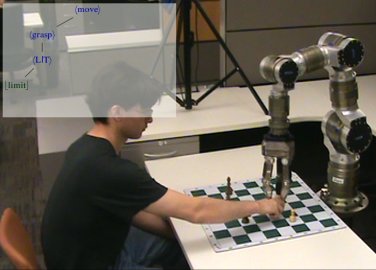

Motion Grammars model robot policies as context-free grammars. This is a useful intermediate representation that enables a variety of policy generation, analysis, and software synthesis techniques.
We demonstrate the motion grammar through the physical human-robot games of Yamakuzushi and Chess and analyze the theoretical capabilities and guarantees of this approach.


We synthesize software for speed-controlled robot walking from the mathematical system model using supervisory control of a context-free Motion Grammar. First, we use Human-Inspired control to identify parameters for fixed speed walking and for transitions between fixed speeds, guaranteeing dynamic stability. Next, we build a Motion Grammar representing the discrete-time control for this set of speeds. Then, we synthesize C code from this grammar and generate supervisors online to achieve desired walking speeds, guaranteeing correctness of discrete computation. Finally, we demonstrate this approach on the Aldebaran NAO, showing stable walking transitions with dynamically selected speeds.
We pose a learning-from-demonstration scenario as grammatical inference. First, we perform a visual analysis to extract a task description from human demonstration, then we transfer the results to a simulated robot.

To produce correctly operating robotic systems, we need a way to modify the system dynamics to achieve the desired behavior. To help automate the derivation of correctly operating controlled systems, we introduce the Motion Grammar Calculus, a set of rewrite rules for Context-Free Hybrid Systems based on the Motion Grammar.